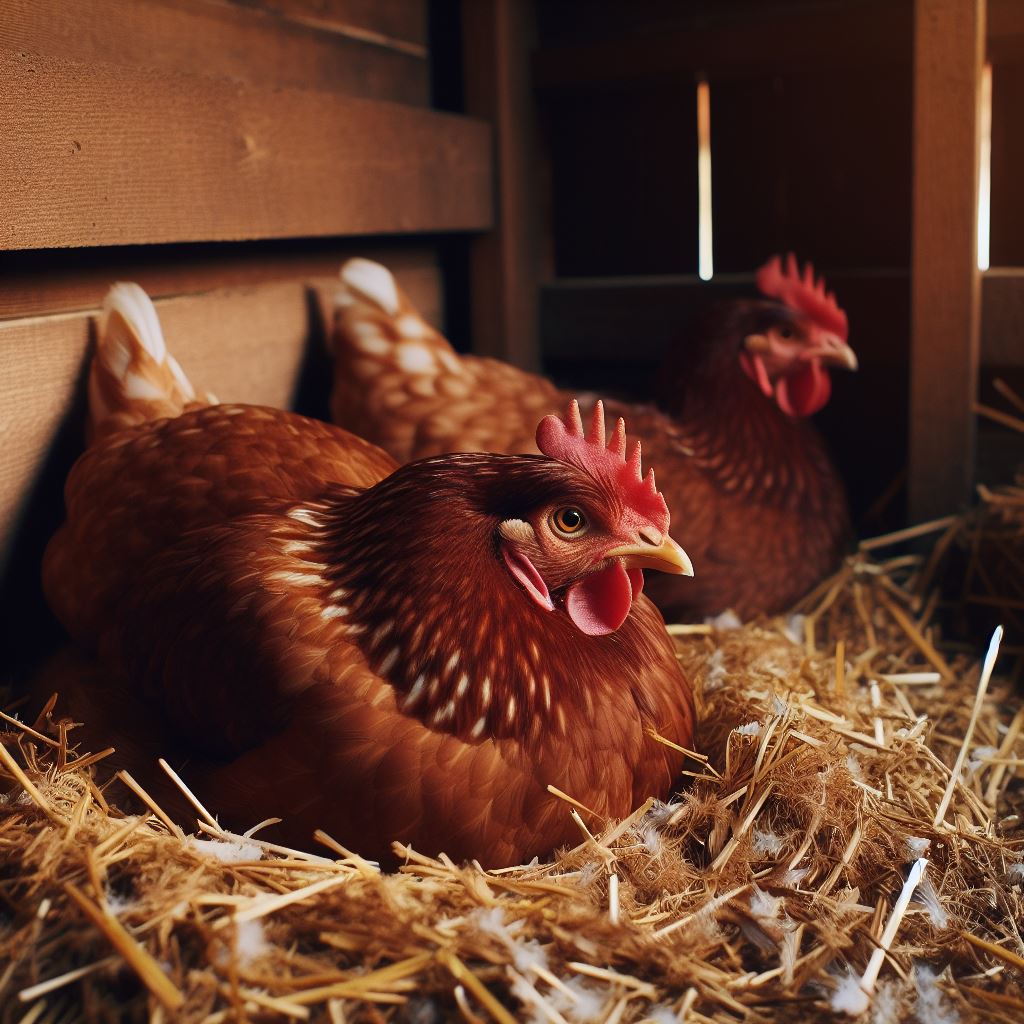What Temperature is Too Cold for Chickens? Everything You Need To Know

Table of content:
Chickens are remarkably hardy birds that can withstand cold temperatures quite well. However, as a chicken owner, it is important to understand their limits and make sure your flock stays warm and healthy through the winter months. This article will explore everything you need to know about cold tolerance in chickens.
 How Cold is Too Cold for Chickens?
How Cold is Too Cold for Chickens?
Chickens can comfortably withstand temperatures as low as 20°F (-6°C) as long as they have a dry shelter to go into. However, prolonged exposure to temperatures below 20°F can result in health issues like frostbite on combs and wattles.
Ideal temperatures for chickens range between 45-75°F (7-24°C). This is the temperature range in which they are most comfortable and productive.
Chickens’ Ability to Deal with Cold
- Chickens have a higher body temperature and faster metabolism than humans which allows them to better handle cold. Their normal body temperature is 106°F.
- They fluff up their feathers to trap body heat. The more compact the feathers, the more warmth is retained.
- Chickens keep warm by perching close together at night and spreading their wings slightly to cover their feet.
Signs Chickens are Too Cold
Watch for these signs that your chickens may be getting too cold:
- Shivering
- Huddling together
- Keeping wings slightly dropped
- Refusing to leave the coop
- Pale combs and wattles
- Lethargy
Impact of Prolonged Cold Exposure
If chickens are exposed to bitter cold for too long they may experience:
- Frostbite on combs and wattles
- Decreased egg production
- Increased feed consumption as their body works harder to stay warm
- Greater risk of illness
- In severe cases, hypothermia and death
Best Winter-Hardy Chicken Breeds
Some chicken breeds are better adapted to cold climates. These include:
- Brahmas
- Cochins
- Faverolles
- Orpingtons
- Chanteclers
- Wyandottes
- Houdans
- Siberian Huskies
Caring for Chicks in Cold Weather
Baby chicks are much more vulnerable to chill than mature chickens. Special considerations must be made to keep them warm.
Chick Temperature Needs
- Chicks need a brooder temperature of 90-95°F for the first week. This gives them room to move closer or farther away from the heat source as needed.
- Lower the temperature by 5°F each week as the chicks feather out and grow. By 4-5 weeks old they will be fully feathered and require 70-75°F.
Providing Warmth
- Use a brooder heating lamp, Brinsea EcoGlow brooder, or other heating element. Position it to create a temperature gradient.
- Use thick pine shavings for bedding. Do not use cedar as it can be toxic.
- Make sure chicks always have access to food and water. Use chick feeders and waters designed to minimize spills.
- Keep drafts away from the brooder area.
 Preparing the Chicken Coop for Winter
Preparing the Chicken Coop for Winter
Proper preparation of the coop for winter will go a long way toward keeping your flock comfortable and thriving.
Ventilation
- Good ventilation removes moisture, ammonia gases, and excess heat while still keeping out drafts.
- Windows, doors, and vents should be tightened up but not completely sealed off.
Insulation
- Insulate walls and ceilings for added warmth.
- Affix heat reflective barrier or radiant foil insulation to windows, walls, and the underside of roofs.
- Pack insulation batts into coop ceilings and walls. Use moisture resistant material.
Bedding
- Use thick layers of wood shavings or straw as insulating bedding material.
Heating Elements
- Safely incorporate heating elements like a brooder lamp, ceramic heater, or radiant heater panel if temperatures will dip below 20°F.
- Make sure heat sources are well-secured and not at risk of falling into bedding. Avoid using space heaters.
Collecting Eggs
- Collect eggs frequently to prevent freezing.
- An enclosed nesting box keeps eggs warmer than open nests.
Chicken Breeds and Cold Tolerance
Some chicken breeds handle cold better than others.
Cold Hardy Breeds
- Brahmas
- Cochins
- Faverolles
- Frizzles
- Wyandottes
Breeds That Dislike Cold
- Leghorns
- Minorcas
- Cornish
- Polish
- Hamburgs
Heat Loving Breeds
- Yokohama
- Cubalayas
- Sultans
- Phoenix
- Malays
Temperature Extremes and Chicken Health
Chickens thrive best with temperatures between 45-75°F. Going outside this range can cause issues.
Effects of Cold
Extreme cold can lead to:
- Frostbite
- Hypothermia
- Decreased egg production
- Increased feed consumption
- Higher risk of illness
Effects of Heat
Extreme heat can cause:
- Heat exhaustion
- Decreased egg production
- Panting
- Diarrhea
- Potentially death
Ideally, chickens should be kept between 45-75°F. This allows them to be most happy and productive.
Conclusion
Chickens are cold hardy birds equipped to handle winter weather. However, they still require special care when the mercury dips below 20°F.
With the preparation of their coop, access to shelter, and using cold hardy breeds, chickens can remain healthy and productive all winter long.
Monitoring your flock for signs of discomfort and making adjustments as needed will keep your chickens warm through the coldest months.
Welcome. I’m Adreena Shanum, the proud owner of this website, and I am incredibly passionate about animals, especially poultry. I founded adreenapets.com as a labor of love, stemming from my desire to share my knowledge and experiences with poultry enthusiasts worldwide.




